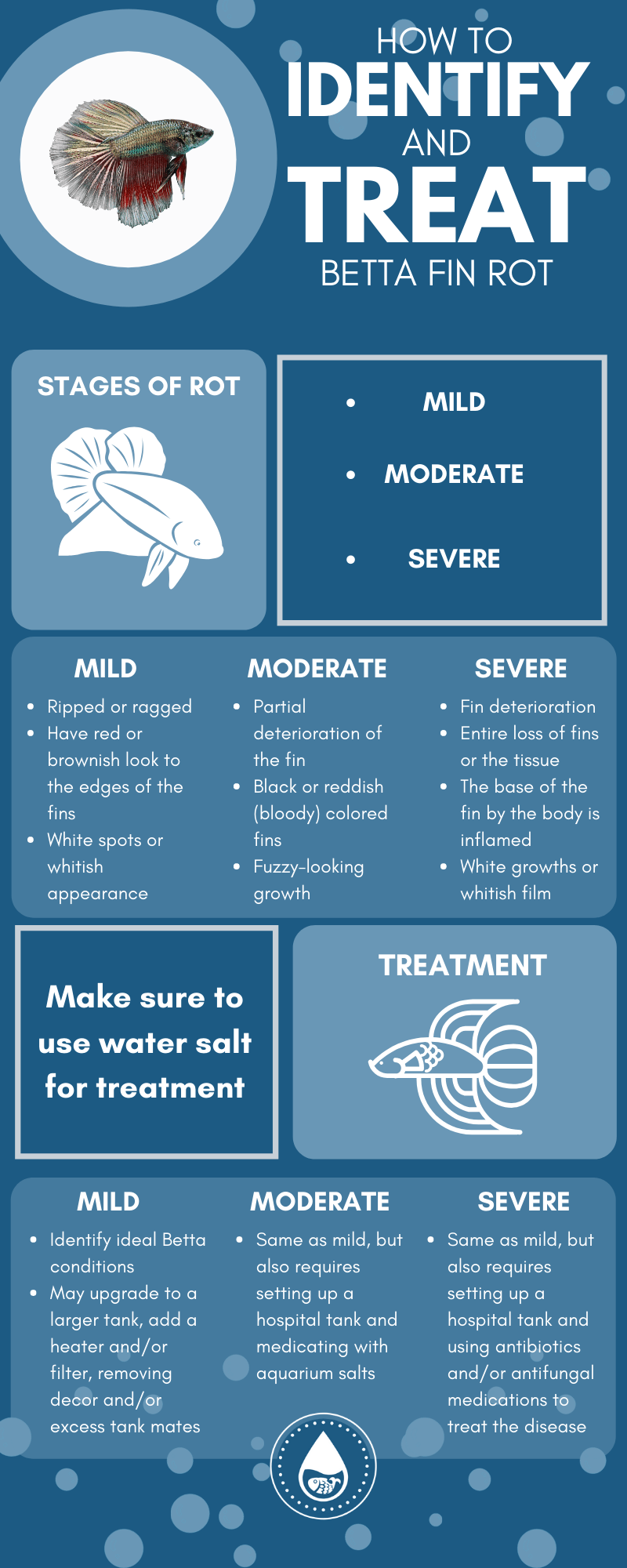Having a pet betta is a ton of fun, but the downside to these colorful fellows is that they are prone to health problems. The most common ailment you’ll typically see is known as Betta Fin Rot. It’s also called Fin Melt, Tail Rot, and even Body Rot, depending on how far the disease advances before you get it under control.
Did you know that using aquarium salts is one of the best interventions for treating betta fin and tail rot? Discover everything you need to know about identifying, treating, and preventing this painful and common disease in bettas.
A Guide to Betta Fin and Body Rot
We love our betta fish for their scrappy personalities and elaborate rainbow-hued fins. Those beautiful, long tail fins come with a downside, however. They make it more likely that your betta will develop a disease known as fin rot.
If you own bettas, chances are you’ll run into fin problems eventually. Every betta owner should learn how to identify and cure it in its earliest stages, so your fish has the best chance for a full recovery. You also need to know which measures to take to prevent further outbreaks from occurring.
What is Fin Rot?
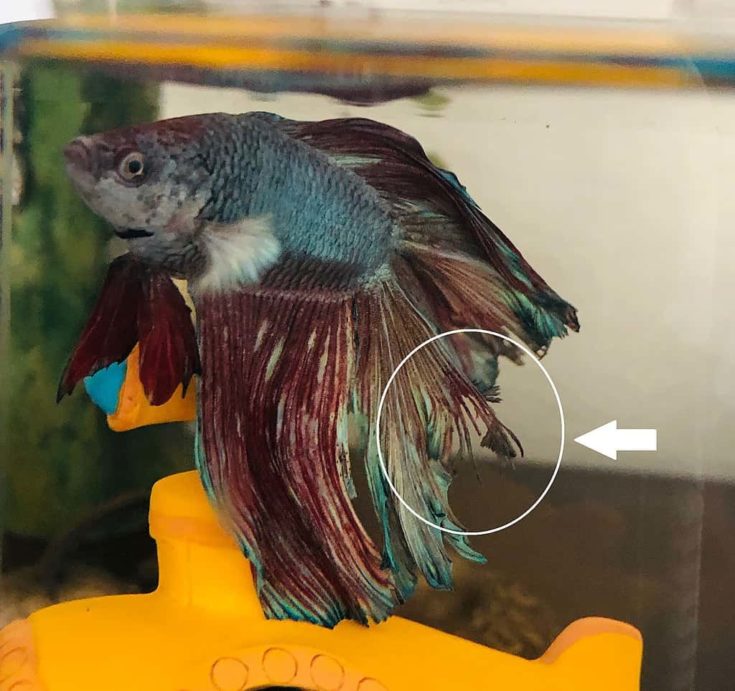
Fin rot is a progressive disease that eats away at and dissolves the delicate tissues of your betta’s fins and tail. If it isn’t treated promptly, it will advance to your fish’s body, where it eats into the scales and causes open, gaping sores to form. Even with treatment, severe cases may be fatal to your betta.
Fin Rot vs Fin Loss—What’s the difference?
In the earliest stages, it can be difficult to tell fin rot from an injury to your betta’s tail or other fins. Varieties with especially elaborate tail or pectoral fins, like the double-tailed and elephant ear bettas, often damage their fancy fins accidentally on your tank decor or get nipped by other fish in the aquarium.
These varieties are also more likely to self-harm if their tank’s conditions are out of their ideal range. The good news is that the treatment for generalized fin loss and an early case of fin rot are the same. If you notice any damage to your betta’s fins, it’s best to treat it as a mild case to prevent the problem from getting worse.
What Causes Fin Rot and Why Are Bettas Prone to it?
Betta fish are prone to this disease because they have those long, fancy tails. Female bettas and varieties with shorter fins, like the plakat, rarely develop fin or tail rot. It’s the price fancy male bettas pay for having such flashy and elaborate fins.

There are a few reasons why a betta might develop fin rot. The problem is usually caused by an underlying bacterial or fungal infection that your fish has picked up. But why does it just appear suddenly, seemingly out of nowhere?
Stress is usually the root or ultimate cause. It’s normal for an aquarium to have colonies of bacteria and even fungi present in the water. A healthy fish usually has no problems coexisting with these organisms. But when your fish is stressed, their immune system crashes and allows the infection to run wild.
Symptoms and Diagnosing Your Sick Betta
How can you tell if your betta is getting sick? The first signs are usually very non-specific and mild. Your betta may be under stress or getting sick if:
- Their appetite decreases or they refuse to eat.
- Their overall color is unusually dull and pale.
- The betta fish fins look rippled or are curling up along the edges.
- They are picking at their own fins or rubbing their fins and/or body along the substrate or aquarium decor.
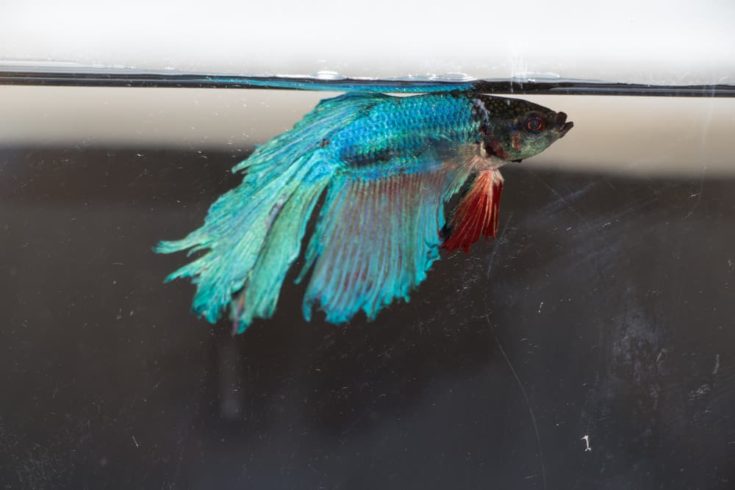
If you notice any of these signs of stress, you should check your tank and see if you can identify any problems with your set-up. If your betta is developing fin rot, you may be able to halt its progression before they show more obvious signs of the disease.
Stages—Details on Symptoms and Diagnosis
What does betta fin rot look like, and what happens if you get the diagnosis wrong? The changes recommended for mild cases often cure other problems as well, so a specific diagnosis may not be needed. Once things progress to moderate or severe, it’s usually obvious that fin rot is what you’re dealing with.
Stage of Fin Rot
Mild
Symptoms
- Receding or ragged edges to pectoral, dorsal, anal and/or caudal fins.
- New red or brownish look to the edges of the fins.
- White spots or whitish appearance along the edges of the fins.
Notes for Diagnosing
- Early stages may resemble fin loss, but are usually spread along a wider area.
- If signs appear on more than one fin or along the entire edge of a fin it’s likely fin rot.
- If whitish spots/growths start on the body or head it’s probably not fin rot but another infection such as ich.
Stage of Fin Rot
Moderate
Symptoms
- Partial deterioration of the fin or multiple fins.
- Black or reddish (bloody) colored fins with noticeable loss of tissue along the edges, moving towards the body.
- Fuzzy-looking growth along the ragged edges of the fins (but not the head or body).
Notes for Diagnosing
- If your betta has red or black-edged fins that look like they are melting back towards the body it’s probably fin rot.
- If you’ve made changes to your aquarium set-up but your betta’s fins look worse, it is progressing and needs more aggressive treatment.
Stage of Fin Rot
Severe
Symptoms
- Fin deterioration progresses more than half-way towards the body, or.
- The entire loss of fins or the tissue between the rays of the fins.
- The base of the fin by the body is inflamed, looks bloody or is turning black.
- Loss of scales and open sores on the body areas closest to the infected fins.
- White growths or whitish film progresses from fins to the body and/or head.
Notes for Diagnosing
- Your fish may stop eating and have problems swimming or remaining upright in the tank.
- Their immune system crashes too, which may lead your betta to succumb to other diseases or parasites unrelated to the fin rot.
- Once the disease progresses to their body it can be very difficult to cure.
- At this stage, your betta may not recover, so immediate treatment is required.
Treating Your Betta for Fin Rot
What should you do once you’ve diagnosed your betta with fin rot? The first thing you should do is check your aquarium set-up and see if you can identify the reason for the illness. It doesn’t make sense to treat your betta until you’ve fixed the underlying problem in your tank, and for mild cases that could be all the cure you need!
Identify and Fix Any Problems With Your Aquarium Set-Up
Remember, the microorganisms behind fin and body rot are nearly always present in your aquarium water. If your betta develops signs of fin rot, there’s likely a reason why their immune system suddenly shut down and made them vulnerable to infection.
The most common reason for a betta to get sick is from stress, and the most common reason for a stressed betta is inadequate or poor water conditions. If you’re having problems with the conditions in your betta aquarium the reasons could be:
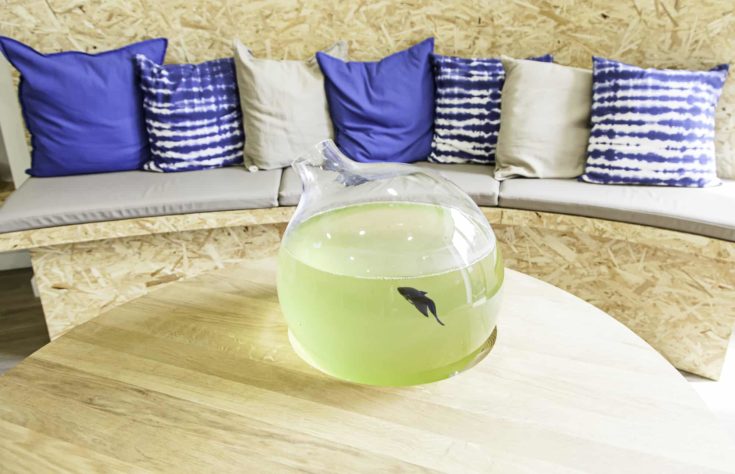
- Water temperature is outside the ideal range of 75°F to 86°F.
- Water temperature fluctuates more than a few degrees over a 24-hour period.
- No heater in your betta tank.
- Water changes are infrequent or not done on an appropriate schedule.
- The tank is too small for your betta (under the recommended 5-gallons).
- The tank is overcrowded with plants and decor.
- There’s too many other fish or aquatic species in the tank with your betta.
Treating Cases of Mild Fin Rot
Once you’ve looked over your set-up, you’ll probably have a good idea about the possible cause or causes of your betta’s infection.
If you correct the problem by adding a heater, reducing the number of decorations or tank mates and/or increasing the frequency of water changes, your betta may recover without needing further treatments.
Your fish should bounce back fairly quickly from a mild case of fin rot. If your betta does not show improvement within two weeks after you’ve made these changes to your aquarium, or if the disease progresses further, you’ll have to take more drastic measures to treat them. You might even need to use a hospital tank.
Using a Hospital or Quarantine Tank

It’s always a good idea to keep a spare tank on hand in case you need to isolate a sick fish for treatment. A hospital tank is usually a small 2 to 5-gallon set-up with no decorations and a basic sponge filter and heater. I don’t even add substrate to my quarantine tanks, and leave them bare instead.
Why do aquarists use hospital tanks? The problem with treating a sick betta in a community tank is that the cure may be toxic and stressful in and of itself. Many medications kill live plants and are fatal to certain aquatic species. Sometimes, you just can’t treat the entire tank for practical reasons.
Using a hospital tank to isolate your sick betta makes it easier to do frequent water changes. Even if you only have a single betta, it may be better to deal with a hospital tank for treatment than your usual 10-gallon set-up. You should always use a 1-stage filter in these tanks since meds can reduce the amount of oxygen the water carries.
How to Treat Moderate Fin Rot
If you’ve made changes to your tank and improved the water conditions, but the fin rot is still progressing, you’ll need to take the next step. One of the best treatments for fin rot is to simply add aquarium salts to your tank!
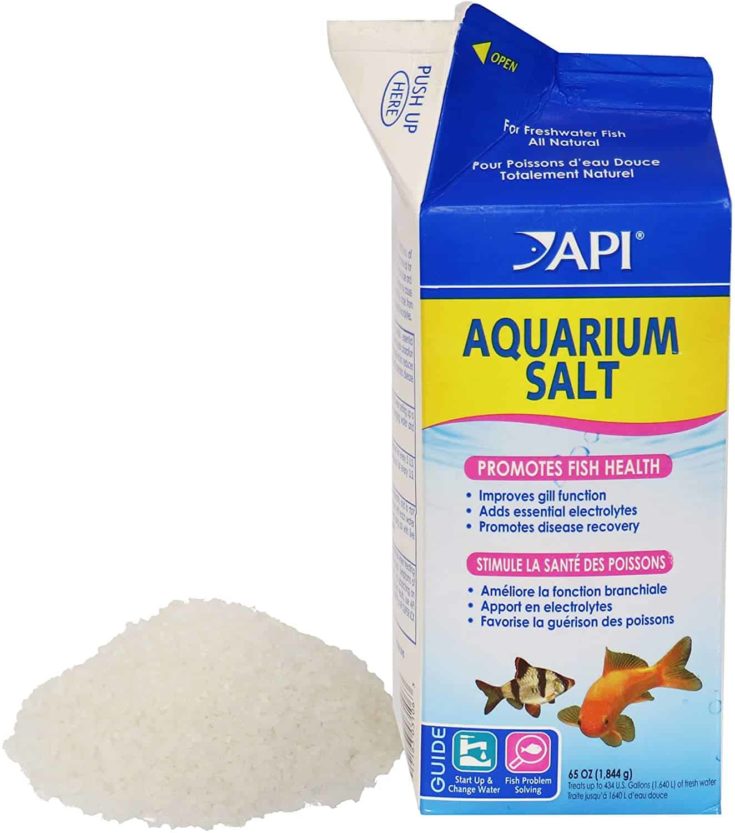
Of course, there’s more to this than just sprinkling salt in your tank. Used improperly, aquarium salts can burn your betta, and they are lethal to most live plants. The salts are also toxic to your betta, and may eventually cause kidney or liver damage. You should only treat your betta with aquarium salts for 10 days at a time.
You’ll have to mix the salt-and-water solution in a bucket first and add it to the hospital tank before you acclimate your betta to the new set-up. If you are dosing a community tank rather than using a hospital set-up, be sure the other animals can handle the salt at that concentration.
To treat your betta’s fin rot with aquarium salts:
- Follow the directions on the container to mix the appropriate strength solution for betta fish, remembering to add a water conditioner to remove any chlorine from your tap.
- Move your tank or hospital set-up to an area where the temperature does not normally exceed 78°F. Higher temperatures can encourage the infection to spread.
- Fill your hospital tank with the saltwater solution and add the heater and sponge filter.
- Set the heater to maintain the temperature at 78°F and wait until the temperature is stable before introducing your betta.
- Slowly acclimate your betta to the hospital tank, just as you would when adding a new fish to an aquarium.
During the 10-day saltwater treatment:

- Change out 50% of the water in the tank every day, adding back the same amount of pre-mixed saltwater solution.
- The water needs to be at the same temperature as your aquarium when you add it to your hospital tank.
- Be sure the salt concentration remains the same regardless of how much water you change, or you might overdose your fish.
- For example: If you used 1 tablespoon (3 teaspoons) of aquarium salts to mix 5 gallons of water initially for your hospital tank, then you should mix 1.5 teaspoons of salt to 2.5 gallons of water to create the same concentration for a 50% water change.
- It’s best to only mix as much saltwater solution as you need for a single water change, rather than making a large batch and storing it for later use.
- As the water evaporates, it leaves the salt behind. Over a few days, the concentration of salt in the solution will increase as the water level drops, which could poison your betta.
- Monitor your betta’s appetite and look for signs of improvement. While your betta is being treated, clean your primary aquarium well and rinse the substrate, decorations, and any live plants before adding fresh tap water and restarting the tank.
Treatment for Severe Fin Rot
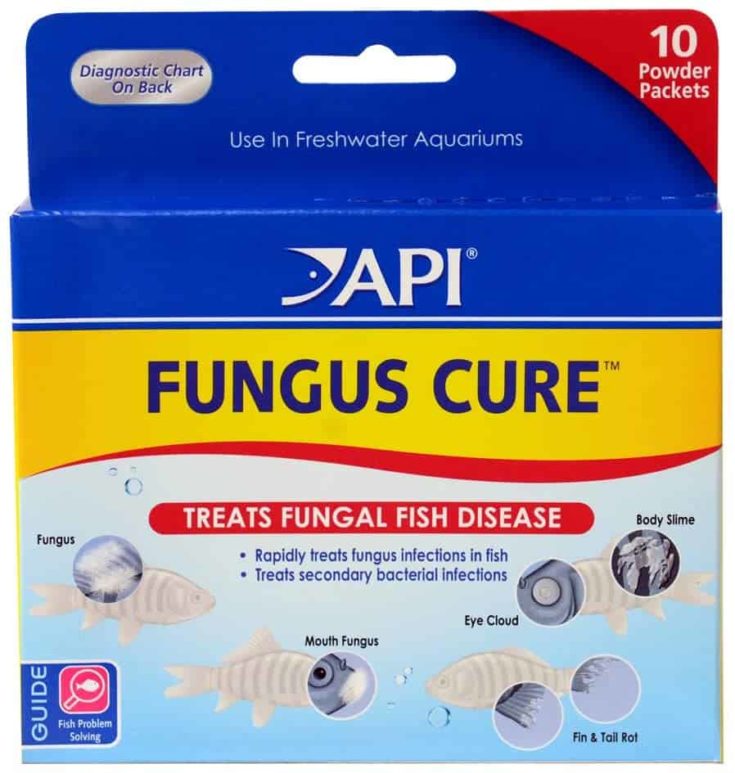
If your betta doesn’t improve while using the aquarium salts, or if you didn’t notice the disease until it progressed to a severe level, you’ll need to take the next step in treatment. This means you’ll have to use medications in your aquarium. If your betta has other infections from their lowered immune system the meds will cure those too.
Just as with moderate cases, it’s best to use a hospital tank when medicating your betta for severe fin or tail rot. I usually start by medicating with an antibiotic such as Maracyn II or API Fungus Cure, which also tackles secondary bacterial infections.
Follow the instructions on the package and finish the course of treatment even if your fish improves quickly. The length of time will vary depending on the medication you use. You may have to do several rounds of treatment to cure your betta’s fin rot:
- Maintain your aquarium at 78°F to reduce the activity of the bacteria.
- Do water changes as directed by the packaging and be sure to add the appropriate amount of medication after water changes to keep the dose of medication consistent.
- A sponge filter or 1-stage filter is a must when using medications in your tank, but be sure there’s no media in the filter or it will remove the meds from the water.
Stage of Fin Rot
Mild
Treatment
Alter aquarium set-up to ideal betta conditions.
May include upgrading to a larger tank, adding a heater and/or filter, removing decor and/or excess tank mates and increasing the frequency of water changes.
Average Time for Improvement and Cure?
- Raise the water temperature to 82o F for three days. Use an OTC White Spot Disease medication to treat the tank.
- If improvement is not noticeable or betta declines further, treat for moderate fin rot.
Stage of Fin Rot
Moderate
Treatment
Same as mild, but also requires setting up a hospital tank and medicating with aquarium salts.
Average Time for Improvement and Cure?
- Improvement should be noticeable within days and remarkable by the end of a week.
- You do not have to continue the treatment once your fish improves and looks to be healing.
- You should not use aquarium salts for more than 10 days at a time.
- Complete recovery time depends on the level of injury but is usually no longer than 2 weeks to a month after the infection is treated.
Stage of Fin Rot
Severe
Treatment
Same as mild, but also requires setting up a hospital tank and using antibiotics and/or antifungal medications to treat the fin rot and any secondary infections your betta may have developed.
Average Time for Improvement and Cure?
- If improvement is going to be seen, it should be noticeable within the first 24 to 48 hours of treatment.
- A typical course of treatment is 3 to 5 days depending on the medications used.
- Full recovery depends on the extent of the injury and the damaged fins may never grow back to their original appearance.
- Severe cases may require several rounds of medication to clear the infection.
Frequently Asked Questions
There are a few questions that always come up when someone’s dealing with a case of fin rot. The most common questions I’ve been asked include:
Q: How Can I Tell if My Betta is Getting Better?
A: It depends on how long you betta’s been sick and how severe their disease is, but you’ll quickly notice your betta’s getting better if you’re using the right treatment. Within a day or so they should look a bit brighter and be more active. If they’ve been off their food, you should notice that their appetite improves too.
Within a week, the damaged edges of your betta’s fins should start to develop a clear film as they heal. The discolored edges of the fins should disappear and return to their normal color. Any other areas of abnormal red, black or white colorations on the fins or body should disappear as well.
Q: Will My Betta’s Fins Grow Back?
A: Bettas with mild or moderate cases of fin rot usually fully recover, although it can take a few weeks for their tail or fins to regrow. Similar to human fingernails, betta’s fins typically grow a few millimeters a month.

Bettas with severe cases of fin rot may never return to their original appearance, even if they survive the infection and treatment protocol. If your betta lost a substantial part of their fins, the damage may be too extensive and the scarring permanent.
Q: Is Fin Rot Contagious?
A: This one is tricky because the answer is both yes and no. Since the bacteria and/or fungi that lead to fin rot are usually present in your aquarium, any animal in the tank is potentially susceptible to infection. But most healthy animals do not get sick, even when there are pathogens in the water.
If your betta develops fin rot, there’s probably something else wrong with your tank that made your fish susceptible to infection. Obviously, other animals in the tank experience the same conditions and could also get sick. That’s why it’s best to identify and fix the tank’s problem and then treat your sick fish for the infection.
Q: Can Fin Rot Kill My Betta Fish?
A: Yes, many bettas with severe fin rot do not survive the infection. If you delay treatment until your fish develops body rot they are unlikely to recover. The medications used for treatment are toxic and also cause stress to your betta. A betta with a severe infection may not be strong enough to survive the treatment.
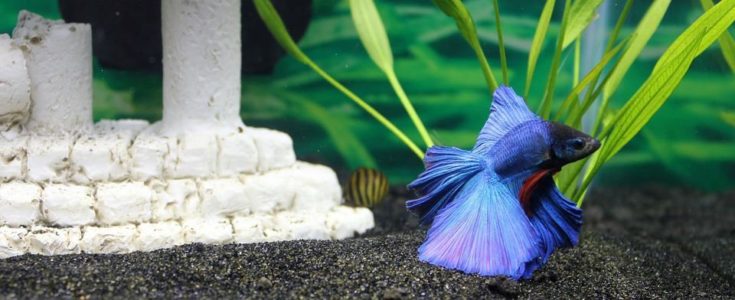
The good news is that fin rot is highly treatable in the mild-to-moderate stages, so if you catch things early your betta has an excellent chance of a full recovery!
Q: How Can I Prevent My Betta From Getting Fin Rot?
A: There’s an old saying that “an ounce of prevention is worth a pound of cure,” and that’s a great way to think about it. While you can’t completely eliminate bacteria or fungi from your tank, you can ensure that your fish stays healthy so they are unlikely to develop an infection.
The key to preventing fin rot and maintaining a healthy betta is to:

- Keep them in a roomy tank (5-gallons and up).
- Don’t crowd them with too many decorations or tank mates.
- Use a heater to maintain its ideal temperature range (75°F to 86°F).
- Stick to a regular schedule for filter maintenance and water changes.
- Don’t over or underfeed your betta.
Conclusion
Fin disease is a common problem in betta fish with long fancy tails, but it’s highly treatable if you catch the infection early. Once the infection advances to body rot, a betta’s chance of survival is low. Simply making some small changes to your aquarium set-up can dramatically reduce your betta’s likelihood of infection.
Low or inconsistent aquarium temperatures and infrequent water changes are the leading cause of this disease. Most betta owners will experience rot at some point, so you need to know the symptoms and how to cure it. The faster you fix the problem and treat your fish, the better chance your betta will completely recover!
